Loan default is a common issue that affects both borrowers and lenders. It occurs when a borrower fails to repay the agreed-upon loan amount within the specified time frame. This blog post aims to provide a comprehensive understanding of the consequences of loan default and strategies to prevent it. By understanding these implications, borrowers can take proactive measures to avoid default, and lenders can implement preventive measures to minimize risks.
Definition of Loan Default:
Loan default refers to the failure of a borrower to meet their financial obligations by not repaying the loan amount as agreed upon in the loan agreement. It is important to note that loan default can occur in various types of loans, including personal loans, mortgages, auto loans, and student loans. It is a serious issue that can have long-lasting financial consequences for both borrowers and lenders.
Financial Implications for Borrowers:
Credit Score Decline: One of the immediate consequences of loan default is a decline in the borrower’s credit score. A credit score is a numerical representation of an individual’s creditworthiness and is used by lenders to assess the risk of lending money to a borrower. A default can significantly lower a borrower’s credit score, making it difficult for them to obtain future loans or credit cards. It can also lead to higher interest rates on future loans, making borrowing more expensive.
Collection Efforts: When a borrower defaults on a loan, lenders often employ collection efforts to recover the outstanding amount. These efforts may include frequent phone calls, letters, and emails urging the borrower to repay the debt. In some cases, lenders may hire collection agencies or sell the debt to a third-party debt collector. These collection efforts can be intrusive and stressful for the borrower, affecting their mental and emotional well-being.
Legal Action: In severe cases of loan default, lenders may resort to legal action to recover the outstanding amount. This can result in a lawsuit filed against the borrower, leading to additional financial burdens such as legal fees and court costs. If the lender wins the lawsuit, the borrower may be required to repay the debt, including any accrued interest and legal fees. Failure to comply with a court judgment can further escalate the consequences, potentially leading to wage garnishment or property liens.
Loss of Assets: In certain types of loans, such as mortgages and auto loans, the borrowed funds are secured by collateral, which can be repossessed in the event of default. If a borrower fails to repay their mortgage, the lender may initiate foreclosure proceedings, leading to the loss of their home. Similarly, defaulting on an auto loan can result in the repossession of the vehicle. The loss of assets can have a significant impact on a borrower’s financial stability and quality of life.
Financial Implications for Lenders:
Loss of Funds: Loan default poses a direct financial risk to lenders as they may not recover the full amount lent to the borrower. In some cases, lenders may only be able to recover a portion of the outstanding debt through collection efforts or asset repossession. This loss can impact the lender’s profitability and ability to extend credit to other borrowers.
Cash Flow Disruptions: Loan defaults can disrupt a lender’s cash flow, especially for financial institutions that heavily rely on interest income from loans. When borrowers default, lenders may face difficulties meeting their own financial obligations, such as paying employees, covering operational expenses, or fulfilling their own debt obligations. Cash flow disruptions can have a cascading effect on the overall stability of the financial institution.
Strategies to Avoid Loan Default:
Improve Creditworthiness: One of the most effective ways to prevent loan default is to improve one’s creditworthiness. Borrowers can achieve this by paying bills and debts on time, reducing credit card balances, and avoiding excessive borrowing. Regularly checking and monitoring credit reports for inaccuracies can also help detect and rectify any issues that may negatively impact creditworthiness.
Use Financial Planning and Budgeting: Effective financial planning and budgeting can help borrowers manage their income and expenses, ensuring they have sufficient funds to meet their loan obligations. Creating a realistic budget, tracking expenses, and prioritizing debt payments can go a long way in preventing default. Seeking professional financial advice can also provide valuable insights and guidance in managing finances effectively.
Seek Alternatives to Traditional Loans: In some cases, borrowers may find it challenging to repay traditional loans due to high interest rates or inflexible repayment terms. Exploring alternative financing options, such as peer-to-peer lending, credit unions, or community development financial institutions, can provide borrowers with more favorable terms and conditions. Researching and comparing different lenders and loan products can help borrowers find the best fit for their financial needs.
Communicate with the Lender: If a borrower anticipates difficulties in repaying a loan, it is crucial to communicate with the lender as early as possible. Lenders may be willing to work out alternative repayment plans or provide temporary relief options such as deferment or forbearance. Ignoring the problem will only exacerbate the situation and limit the borrower’s options for resolving the issue.
Conclusion:
Loan default can have severe financial implications for both borrowers and lenders. For borrowers, it can lead to a decline in credit scores, collection efforts, legal action, and even the loss of assets. Lenders, on the other hand, face the risk of loss of funds and cash flow disruptions. However, by implementing strategies to improve creditworthiness, using financial planning and budgeting, exploring alternative loan options, and maintaining open communication with lenders, borrowers can proactively prevent loan default.
Understanding the consequences of loan default and taking proactive measures to prevent it is crucial for both borrowers and lenders. By prioritizing financial responsibility and exploring available resources, borrowers can avoid the negative repercussions of default, while lenders can minimize their risks and maintain a healthy lending portfolio.







